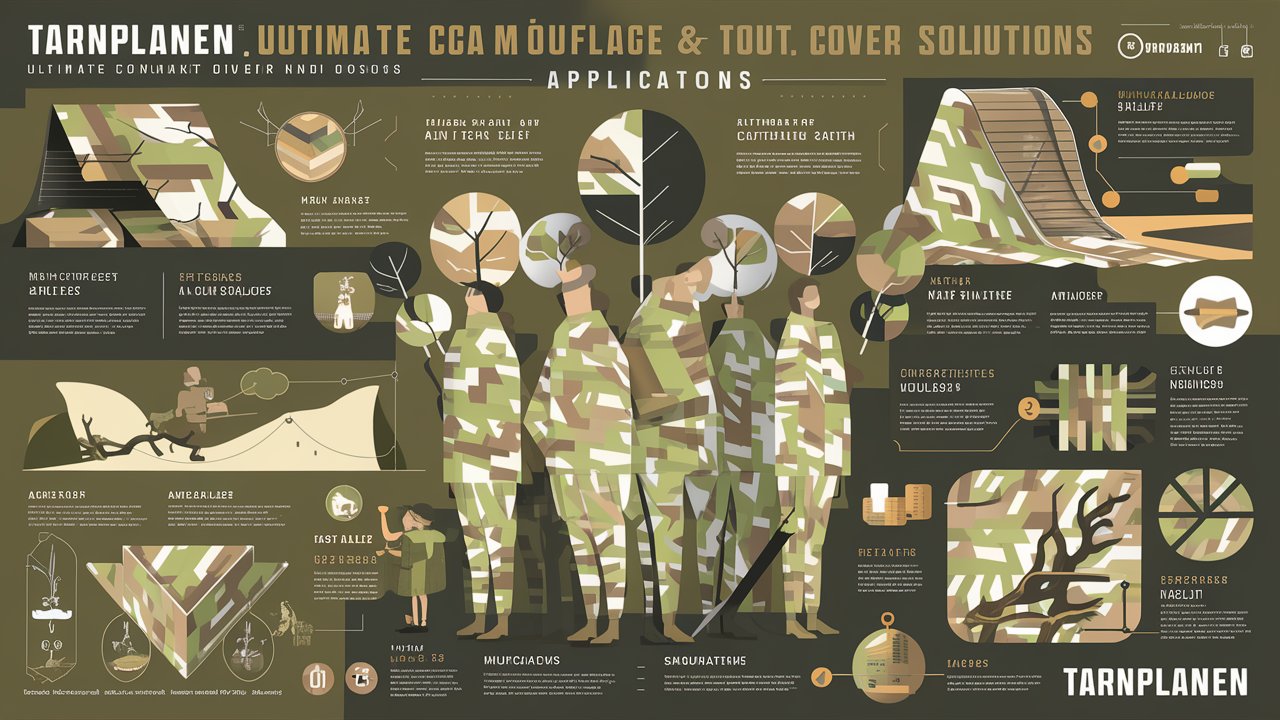Technology
Understanding What About Potnovzascut Issues: Causes, Effects & Solutions

In our increasingly digital age, new terms and frameworks emerge that challenge conventional systems. One such term — “potnovzascut” — has begun to surface within technology, business and system-integration conversations. While it’s not yet universally defined, a working understanding of what about potnovzascut issues is essential for organizations, IT leaders and stakeholders who are navigating hybrid infrastructure, legacy-digital transitions and systemic risk. In this article we explore in depth what potnovzascut issues are, why they matter, how they manifest, and what we can do about them.
What Does “Potnovzascut” Mean?
Although not found in standard dictionaries, many specialists define potnovzascut broadly as the friction, misalignment or breakdown that occurs when a legacy system, traditional process or established infrastructure meets rapidly evolving digital or non-traditional frameworks. In one guide it is described as “systemic issues caused by conflicts between traditional and digital systems.”
Key characteristics of potnovzascut include:
-
A legacy or established system that was not designed for the new environment.
-
Rapid change or digitization pushing the system outside of its comfort zone.
-
Hidden dependencies, unseen risks or unintended side-effects when bridging old and new.
-
A mismatch in governance, process, scale or expectations between older and newer domains.
Understanding this term allows organisations to proactively identify and mitigate the kinds of subtle, creeping failures that can turn into bigger disruptions.
Why Potnovzascut Issues Matter
When we say “what about potnovzascut issues”, we are asking whether these hidden conflicts or latent failures are present in a project, system or enterprise. We emphasise their importance for several reasons:
-
Operational risk: These issues often lurk beneath the surface, leading to failures in processes, unexpected downtime or unexpected behaviour when systems interact.
-
Strategic cost: Legacy-to-digital change is expensive. If potnovzascut issues aren’t addressed early, the cost of repair, rework or replacement can escalate rapidly.
-
Governance & compliance: Organizations may adopt new digital systems but keep old compliance processes – the misalignment can create regulatory risk.
-
Innovation stagnation: Because hidden friction slows change, organisations may hesitate to pursue new opportunities, compromising agility.
One recent analysis outlines that potnovzascut challenges are “those caused by the clashes of tradition and modernity in organizational infrastructure.” Hence the question “what about potnovzascut issues?” becomes a vital checkpoint for decision-makers.
Common Manifestations of Potnovzascut Issues
When we inspect systems and processes, we often find potnovzascut issues taking shape in predictable ways. Here are some common examples:
1. Legacy data silos inhibiting real-time analytics
An organisation may have invested in advanced analytics or AI platforms but still rely on decades-old data warehouses, file-shares or mainframe exports. The result: delayed insight, manual intervention and chain-failures.
2. Hybrid IT infrastructure with mismatched governance
Suppose a part of the business runs on a cloud-native platform and another part still on on-premises servers with different patch cycles, security standards or change controls. Friction arises when a process spans both environments, and potnovzascut issues surface as misconfigurations, security lapses or unexpected downtime.
3. Manual procedures overriding automated workflows
A digital transformation program may implement automation, yet the business retains manual hand-offs, paper approvals or outdated audit trails. The mismatch becomes a source of risk, delay, and error.
4. Mismatch between user expectations and system capabilities
Users expect the speed and responsiveness of modern apps, but if the back-end is held back by legacy architecture, the user experience deteriorates and the organisation may not even realise the root cause is a potnovzascut issue.
By identifying these manifestations, we can ask the right questions and uncover latent issues early.
Root Causes Behind Potnovzascut Issues
Understanding the “why” is essential. Some of the main root causes include:
-
Organisational inertia and resistance to abandon legacy systems, leading to coexistence rather than clean transition.
-
Poor visibility into legacy dependencies, leading to unplanned interactions when integrating new systems.
-
Governance fragmentation, where different parts of the business apply different policies, tools, or compliance standards.
-
Skills gap: legacy-system experts may be scarce and new digital teams may lack knowledge of underlying legacy platform intricacies.
-
Technical debt that has accumulated over years of deferred maintenance, making transitions costly and fragile.
Recognising these causes enables organisations to treat potnovzascut issues not just as symptoms but as deeper systemic problems.
How to Diagnose and Assess Potnovzascut Risk
We recommend a structured approach when assessing potnovzascut issues:
1. Inventory and mapping
Document all systems, interfaces, processes, and data flows, both legacy and new. Visualise how they interact and identify weak links or unsupported hand-offs.
2. Stakeholder workshops
Engage both legacy-system owners and digital-transformation leads to identify pain-points, manual workarounds and unexpected dependencies.
3. Risk scoring
Apply a risk matrix: high-impact & high-likelihood items should receive priority. For example: “legacy authentication server supporting a new cloud app” is high risk.
4. Operational analysis
Look for symptoms: unexpected downtime, frequent manual interventions, missing metrics, decentralised control, or user complaints. These may indicate potnovzascut issues.
5. Health-check audit
Engage external or internal audit teams to review governance, patch cycles, data-ownership and process alignment, focusing on legacy-digital intersections.
By diagnosing effectively, we can target resources where they will have greatest effect.

Practical Solutions to Mitigate Potnovzascut Issues
Once identified, we can apply a series of mitigation strategies. These include:
Legacy-modernisation roadmap
Create a phased plan to reduce reliance on legacy systems. Rather than immediate rip-and-replace, consider hybrid co-existence with clear end-points.
Governance harmonisation
Ensure that old and new systems adhere to unified governance: patching, logging, access controls, incident response. Remediate gaps in policies between the two.
Automated integration and monitoring
Introduce modern APIs, orchestration tools and real-time monitoring to replace brittle manual hand-offs. This fosters visibility and reduces error-prone manual processes.
Data-platform unification
Consolidate data from legacy and digital systems into a single platform or data lake, enabling real-time analytics and removing silos.
Training and competence building
Equip teams with cross-domain skills: legacy system knowledge plus modern cloud/integration tooling. This helps avoid “us vs them” gaps.
Technical debt reduction
Allocate resources to refactor, decommission or archive older systems. The longer they persist, the more potnovzascut risk accumulates.
By executing these solutions, we can transform latent risk into managed infrastructure and operational resilience.
Best Practices for Ongoing Management
Managing potnovzascut issues is not a one-time exercise. For sustainable improvement we recommend:
-
Regular audits of legacy-digital interfaces to detect emerging risk.
-
Change management that includes legacy systems in the governance loop—with every major change reviewed for rippling impacts.
-
Budget for transition: Recognise legacy-system upkeep costs not only in maintenance, but in risk and slowed agility.
-
KPIs around integration health: e.g., number of manual hand-offs, number of failed integrations, latency between systems.
-
Culture of collaboration: Legacy team, transformation team and operations team should work jointly rather than in silos—promoting shared ownership of potnovzascut risk.
With these practices we ensure that we catch new issues early and keep the infrastructure agile, secure and aligned with business objectives.
Conclusion
Addressing what about potnovzascut issues is critical if we are to ensure safe, effective and future-proof business operations in a world where legacy meets innovation. Organisations that proactively identify, assess and mitigate the friction between old and new systems will enjoy enhanced agility, reduced risk and improved performance. By treating potnovzascut not as a vague concept but as a tangible set of issues, we transform latent hazards into managed assets and pave the way for smoother transformation.
Frequently Asked Questions (FAQ)
Q1: What is the simplest definition of a potnovzascut issue?
A: A potnovzascut issue is the friction or breakdown that occurs when a legacy system, process or infrastructure overlaps or interacts poorly with newer, digital or transformed systems.
Q2: How do I know if my organisation has potnovzascut issues?
A: Look for symptoms such as frequent manual hand-offs between systems, unexpected downtime, data silos, mismatched governance between old and new platforms, and slow integration velocity.
Q3: Can potnovzascut issues be fully eliminated?
A: While complete elimination may be impractical in large organisations, equipping yourself with a clear roadmap, governance harmonisation, monitoring, and legacy reduction will greatly reduce the risk and impact.
Q4: Who in the organisation should be responsible for addressing potnovzascut?
A: It should be a joint effort: IT leadership, digital transformation office, legacy operations teams and governance/compliance functions must collaborate—no single team can solve this in isolation.
Q5: What are the first steps to take when we suspect potnovzascut risk?
A: Conduct an inventory and mapping of systems, engage stakeholders to uncover latent dependencies, perform a risk scoring exercise and then build a phased roadmap for mitigation and modernisation.
Technology
Potnovzascut: The Ultimate Guide to Understanding, Benefits, and Uses

In the evolving world of modern innovation and technology, about potnovzascut has emerged as a term gaining significant traction among professionals, researchers, and enthusiasts alike. This powerful concept has reshaped perspectives in multiple industries by introducing advanced methods, improved efficiency, and revolutionary approaches. Understanding what Potnovzascut is, how it functions, and why it’s crucial for the future is essential for anyone who wants to stay ahead of the curve.
In this article, we will explore what Potnovzascut means, its core principles, practical applications, and key advantages, offering an in-depth understanding of why this concept is becoming a dominant force in its domain.
What is Potnovzascut?
Potnovzascut is a modern innovation designed to optimize, protect, and transform specific operational or technological processes. It represents a combination of intelligent systems, strategic analysis, and cutting-edge algorithms that work together to improve outcomes and efficiency. While its origins are rooted in advanced data and process management, Potnovzascut has evolved into a multifaceted framework applied across various sectors — from engineering and technology to business operations and cybersecurity.
Essentially, Potnovzascut works as a comprehensive system of protection, enhancement, and adaptability, ensuring that the entities or systems it supports remain secure, reliable, and high-performing.
The Core Principles of Potnovzascut
The functionality of Potnovzascut revolves around three major pillars: protection, optimization, and innovation.
1. Protection
Potnovzascut provides advanced security mechanisms that defend against vulnerabilities and risks. It helps organizations and systems maintain integrity by detecting, analyzing, and preventing potential threats before they cause damage.
2. Optimization
Efficiency is the heart of Potnovzascut. By integrating advanced data analytics and AI-driven processes, it allows for maximum performance with minimal resource consumption, ensuring that operations run smoothly, cost-effectively, and with greater sustainability.
3. Innovation
Potnovzascut continuously evolves through adaptive algorithms and machine learning technologies. It encourages innovation by allowing systems to learn, adapt, and improve autonomously, making them more resilient and forward-thinking over time.
How Potnovzascut Works
The operational process of Potnovzascut combines multiple layers of intelligent automation, predictive analytics, and strategic calibration. It collects and processes data through advanced computational models, identifying inefficiencies and potential risks. Based on this analysis, the system automatically adjusts its parameters to maintain peak performance.
The architecture of Potnovzascut includes several integrated modules, each designed for a specific purpose:
-
Data Acquisition and Analysis: Captures data from multiple sources for real-time assessment.
-
Optimization Engine: Uses AI-based algorithms to enhance process performance.
-
Protection Layer: Safeguards against external and internal threats using security protocols.
-
Feedback Mechanism: Continuously refines strategies based on performance data and predictive models.
Through this sophisticated framework, Potnovzascut ensures that organizations operate efficiently, securely, and intelligently.
Applications of Potnovzascut
Potnovzascut is not limited to a single industry; its applications are diverse and impactful across various sectors.
1. In Technology and AI
In artificial intelligence, Potnovzascut enhances learning algorithms, allowing AI systems to make smarter, faster, and safer decisions. It plays a crucial role in data integrity, algorithm training, and system resilience, ensuring that AI solutions are both effective and ethical.
2. In Business and Operations
Businesses leverage Potnovzascut to streamline operations, improve productivity, and minimize waste. From supply chain management to financial forecasting, the framework offers data-driven insights that empower decision-makers to act with precision and confidence.
3. In Cybersecurity
One of the strongest areas where Potnovzascut shines is cybersecurity. Its adaptive defense mechanisms provide real-time monitoring, threat detection, and mitigation strategies, protecting organizations from both known and emerging threats.
4. In Research and Development
Researchers use Potnovzascut to accelerate innovation. By integrating predictive analytics and automated modeling, it helps uncover new possibilities in product design, material science, and technology development.
5. In Healthcare
Potnovzascut supports healthcare systems through data optimization, predictive diagnostics, and secure data handling, enabling faster diagnosis, better treatment planning, and efficient patient data management.

Benefits of Potnovzascut
The rise of Potnovzascut has brought a wide range of benefits to industries and professionals.
Enhanced Efficiency
By automating complex processes and reducing manual intervention, Potnovzascut boosts efficiency and output quality.
Improved Security
Its built-in protection layers defend sensitive data and operational systems from breaches, ensuring complete digital safety.
Cost Reduction
Through continuous optimization, Potnovzascut helps reduce unnecessary expenses while maximizing return on investment.
Data-Driven Decisions
Potnovzascut leverages analytics to enable smart, evidence-based decisions, minimizing risks and improving strategic planning.
Scalability
Its adaptive design ensures seamless scalability, allowing organizations to expand without compromising stability or performance.
Why Potnovzascut Matters for the Future
The world is becoming increasingly data-driven, and technologies like Potnovzascut are essential for managing complexity with intelligence and foresight. It represents the next stage of digital transformation — one where systems not only respond to change but anticipate and evolve with it.
As industries continue to adopt automation and AI, Potnovzascut will play a defining role in maintaining balance between innovation, security, and efficiency. Its importance will only grow as the digital ecosystem expands, making it an indispensable tool for the modern age.
Common Challenges in Implementing Potnovzascut
While the benefits are numerous, implementing Potnovzascut can pose challenges. These include integration complexities, initial setup costs, and the need for skilled professionals to manage its operation. However, once successfully integrated, the long-term returns in performance and security far outweigh these initial hurdles.
Organizations that invest in Potnovzascut early are more likely to gain a competitive advantage, outperforming peers in adaptability and innovation.
Conclusion
In conclusion, about potnovzascut is a transformative innovation r eshaping industries through protection, optimization, and intelligent automation. It is a forward-thinking solution that aligns with the modern world’s demand for smart, secure, and efficient systems. Whether applied in business, technology, healthcare, or cybersecurity, Potnovzascut’s adaptability and intelligence make it a cornerstone of sustainable progress.
As we move deeper into a future defined by digital transformation, adopting Potnovzascut isn’t just an option — it’s a strategic necessity for those seeking long-term growth, resilience, and excellence.
FAQs About Potnovzascut
1. What industries can benefit from Potnovzascut?
Potnovzascut can be applied in almost any industry, including technology, business, healthcare, cybersecurity, and research.
2. Is Potnovzascut suitable for small businesses?
Yes. While its initial implementation requires planning, small businesses can use Potnovzascut to automate operations and enhance efficiency.
3. How secure is Potnovzascut?
Potnovzascut integrates advanced encryption and security protocols, ensuring robust protection against threats and data breaches.
4. What makes Potnovzascut different from traditional optimization systems?
Unlike traditional systems, Potnovzascut is adaptive, learning continuously through AI to improve performance and security over time.
5. Can Potnovzascut be customized for specific needs?
Absolutely. Potnovzascut’s modular framework allows it to be tailored to fit the specific goals and challenges of any organization.
Technology
Potnovzascut: A Complete Guide to Understanding Its Function, Uses, and Benefits

In the rapidly evolving world of modern technology and innovation, Potnovzascut has emerged as a powerful and versatile concept driving advancements across multiple industries. From manufacturing and engineering to data protection and automation, Potnovzascut represents a pivotal shift towards precision, reliability, and efficiency. This comprehensive guide explores what Potnovzascut is, how it works, and why it has become an essential term in today’s industrial and technological landscape.
What Is Potnovzascut?
Potnovzascut is a multifaceted system or technology designed to enhance performance, accuracy, and durability in both mechanical and digital applications. While its origin lies in engineering and process optimization, it has gradually expanded to include uses in data protection, industrial control systems, and precision manufacturing. The name Potnovzascut often refers to a protective or regulatory mechanism that safeguards a system from external stress, instability, or overload — a kind of “protection and optimization cut.”
The core principle of Potnovzascut lies in preventing operational failures by maintaining balance within high-pressure or high-performance environments. Whether used in machines, servers, or algorithms, its goal is to stabilize performance while minimizing risk.
The Core Mechanism Behind Potnovzascut
The efficiency of Potnovzascut is derived from its smart integration of protection layers and self-regulating algorithms. It functions through a combination of mechanical shielding, electrical stabilization, and intelligent control.
-
Protective Layering: Potnovzascut includes multilayer protection that absorbs shocks, prevents overheating, and minimizes energy loss.
-
Adaptive Feedback Systems: It monitors changes in temperature, voltage, or data flow and automatically adjusts parameters to ensure safe operation.
-
Efficiency Optimization: By reducing internal friction and external stress, it ensures longevity and reliability in devices and systems.
This blend of proactive monitoring and reactive control allows Potnovzascut to excel in both hardware-based and digital environments.
Applications of Potnovzascut Across Industries
The adaptability of Potnovzascut has made it an integral component in several sectors. Its ability to enhance safety, reliability, and precision allows for diverse applications, including:
1. Manufacturing and Engineering
In high-precision industries, Potnovzascut is used to reduce wear and tear on machinery. It acts as a dynamic barrier, ensuring smooth operation under extreme conditions. Factories using Potnovzascut technology experience less downtime, improved output, and longer equipment lifespans.
2. Data Protection and Cybersecurity
In the realm of cybersecurity, Potnovzascut serves as a digital firewall mechanism that shields systems from data corruption and cyberattacks. By using encryption and predictive monitoring, it identifies and neutralizes threats before they cause harm.
3. Energy and Power Systems
Power plants and energy distribution systems rely on Potnovzascut for load management and overload prevention. It ensures a consistent energy flow, optimizing voltage distribution while preventing costly blackouts or equipment failures.
4. Automotive and Aerospace Industries
Potnovzascut is increasingly used in aerospace engineering and electric vehicle technology. It regulates heat, pressure, and energy usage, ensuring performance consistency under demanding operational conditions.
5. AI and Automation Systems
In artificial intelligence and robotics, Potnovzascut ensures algorithmic balance and hardware protection. It maintains stability in automated systems, allowing them to function safely in unpredictable environments.
Benefits of Implementing Potnovzascut
The integration of Potnovzascut technology provides a wide range of tangible benefits, driving both performance and sustainability.
1. Enhanced System Reliability
By maintaining operational equilibrium, Potnovzascut prevents breakdowns and ensures continuous performance even under high stress.
2. Extended Equipment Lifespan
Its ability to minimize wear and manage internal load leads to a significant increase in the durability of mechanical components.
3. Improved Energy Efficiency
Potnovzascut reduces unnecessary energy consumption by optimizing power distribution and thermal management, leading to greener and more sustainable operations.
4. Data Integrity and Security
Through intelligent monitoring, it ensures data authenticity, encryption, and protection from external manipulation or loss.
5. Cost Reduction
By preventing malfunctions and optimizing performance, Potnovzascut helps businesses save costs on repairs, energy, and downtime.

How Potnovzascut Works in Digital Environments
In digital infrastructures, Potnovzascut functions as a hybrid protection protocol, combining data encryption, load balancing, and adaptive correction. It utilizes machine learning models to identify performance anomalies and apply corrective measures in real-time.
For instance, in cloud computing environments, Potnovzascut can automatically reallocate processing power or storage space to maintain smooth performance during peak loads. Similarly, in cybersecurity, it can detect intrusion attempts and deploy real-time countermeasures without human intervention.
The result is a system that is not just secure but self-optimizing, ensuring long-term stability in digital ecosystems.
Potnovzascut and Future Innovations
As industries move towards Industry 5.0, the role of Potnovzascut is expected to grow exponentially. With advancements in AI, IoT, and autonomous systems, its framework will evolve into a universal safeguard layer for intelligent machines and digital infrastructures.
Future developments are focusing on predictive protection, where Potnovzascut will anticipate potential failures or breaches before they occur, using advanced analytics and neural networks. This will mark a new era of proactive defense and optimization in technology.
Challenges in Potnovzascut Implementation
Despite its immense potential, Potnovzascut adoption is not without challenges. Some of the major barriers include:
-
High Initial Cost: Implementing Potnovzascut systems requires significant upfront investment.
-
Complex Integration: It needs to be carefully synchronized with existing infrastructure.
-
Technical Expertise: Skilled personnel are required to configure and maintain Potnovzascut systems effectively.
However, as awareness and demand grow, these challenges are being gradually mitigated through automation tools, modular integration models, and AI-assisted deployment.
Conclusion
In a world increasingly reliant on digital stability and mechanical precision, Potnovzascut stands as a cornerstone of innovation, protection, and efficiency. It embodies the next generation of smart protection and optimization technologies, blending human ingenuity with artificial intelligence. As we look toward the future, embracing Potnovzascut means embracing resilience, sustainability, and progress across every industry it touches.
Frequently Asked Questions (FAQ)
1. What is the main purpose of Potnovzascut?
Potnovzascut is designed to enhance protection, performance, and optimization in mechanical and digital systems by maintaining operational balance and preventing failures.
2. Is Potnovzascut software or hardware?
It can be both, depending on its application. In engineering, it may refer to physical protection systems, while in IT, it operates as a software-based control protocol.
3. How does Potnovzascut improve efficiency?
By dynamically regulating system parameters, it minimizes energy waste, prevents overload, and ensures smoother performance, thereby boosting efficiency.
4. Can small businesses implement Potnovzascut?
Yes, scalable versions of Potnovzascut are available, allowing small and medium enterprises to benefit from its optimization capabilities without large-scale investments.
5. What is the future of Potnovzascut technology?
The future lies in predictive and AI-driven Potnovzascut systems that will autonomously identify and resolve potential threats before they cause disruption.
Technology
Comprehensive Guide to Tarnplanen: The Ultimate Camouflage & Outdoor Cover Solution

In today’s outdoor and tactical gear landscape, tarnplanen has emerged as a standout solution for those seeking reliable camouflage, protection, and versatility. Whether you’re an outdoor adventurer, hunter, survivalist, or simply someone who wants to safeguard gear under tough conditions, a high-quality tarnplanen can make a significant difference. In this article we discuss what tarnplanen is, why it matters, how to choose the best one, and how to use and maintain it to ensure you get maximum value and performance from your cover.
What Is Tarnplanen?
Tarnplanen literally comes from German roots (“Tarn” meaning camouflage, “Planen” meaning tarpaulins/coverings), and refers to tarpaulins or sheets specifically designed with camouflage patterns and durability for outdoor, tactical or protective use. Sources note that these are “German-designed camouflage tarpaulins that provide superior weather protection and concealment for adventure travelers exploring…”.
In practical terms, a tarnplanen functions like a tarp—but one that emphasizes camouflage ability, durable weather resistance, and multi-purpose usage across environments. One resource summarizes: “Tarnplanen … are simply tarps with smart designs made to hide and protect gear, people, and positions from sight and weather.”
Because it blends the utility of a standard tarp with tactical/stealth features, tarnplanen is especially favored in scenarios where concealment and durability matter.
Why Choose a Tarnplanen? Key Benefits
Versatility & Multi-Purpose Use
A tarnplanen is exceptionally flexible. Whether you’re covering gear, creating a makeshift shelter, protecting equipment from rain or sunlight, or even performing camouflaged field operations, these covers serve many roles. For example, one article states: “Whether you’re setting up a temporary campsite, creating a rain shelter, or simply covering your equipment, the tarnplanen is the unsung hero in your outdoor kit.”
Camouflage & Concealment
Unlike ordinary tarps, tarnplanen emphasizes blending into natural or tactical environments. With camouflage patterns, coatings, and designs that disrupt outlines and reflect less light, the coverage becomes more effective for concealment as well as for aesthetic outdoor use.
Durability & Weather Resistance
The materials used in high‐quality tarnplanen are built to withstand harsh outdoor conditions—wind, rain, UV exposure, abrasion. One source highlights this: “the material’s durability is noteworthy. It withstands harsh weather conditions while maintaining its functionality over time.”
Lightweight and Packable
Despite offering robust coverage, many tarnplanen models are designed to be lightweight, compact, and easy to carry. This portability makes them ideal for hiking, camping, tactical operations or emergency kits.
Practical Cost-Effectiveness
Because a tarnplanen can function as gear cover, shelter wall, ground sheet, shade, and more, it offers high utility for its cost. Investing in a good one can reduce the need for multiple single-purpose items.
How to Choose the Right Tarnplanen
Selecting the best tarnplanen involves understanding several key factors. Below we break down the most important specifications and considerations:
Material & Coating
You’ll want to look for durable materials like ripstop nylon, polyester, or heavy‐duty polyethylene. Coatings or laminations (such as polyurethane, PU, or silicone) will improve waterproofing and UV resistance. A well-engineered tarnplanen will show signs of reinforced seams, grommets, and coatings rated for outdoor use.
Size & Shape
Choose the size based on what you intend to cover: gear, tent, group shelter, equipment. Shape variations include rectangular, square and sometimes irregular shapes tailored for specific uses. One guide categorizes them: “Rectangular tarnplanen… Square tarnplanen… Tarp with grommets.”
Grommets & Attachment Points
Look for reinforced grommets or tie‐points along edges and in interior positions. These allow you to secure the tarp effectively in windy conditions or rig custom shelter configurations. Some tarnplanen come with additional loops or toggles for added flexibility.
Camouflage Pattern & Colour Scheme
Depending on your environment—forest, desert, snow, urban—you’ll want a camouflage pattern suited to the terrain. Some models may offer reversible surfaces or neutral colours when you’re not actively seeking stealth.
Weight & Packability
If you’re hiking or need to fly with your tarp, weight matters. Lighter tarps with high strength‐to‐weight ratios are preferable. However, very lightweight models may compromise durability—so balance accordingly.
Weather Resistance & Sealing
Check specifications for waterproof rating (e.g., hydrostatic head), seam sealing, and UV degradation resistance. This ensures your tromplanen will perform when conditions turn adverse.
Budget & Brand Reputation
While you don’t always need the most expensive option, selecting a tarnplanen from a credible brand with warranties or robust reviews means better reliability. Investigate customer feedback for durability over time rather than just first impressions.

How to Use a Tarnplanen Effectively
Purchasing the right tarnplanen is only the first step. To derive full value from it, correct setup, maintenance, and smart use are essential.
Selecting the Environment & Layout
Begin by choosing your site wisely. For example: a flat surface, minimal debris, avoiding depressions where water can pool. If you’re using it for camouflage, consider background patterns, shadowing, and positioning relative to light.
Rigging Techniques
Use the grommets to secure your tarp: anchor points, guy lines, stakes, trees, or structural support. Ensure tension is applied evenly so the tarp stays taut and prevents sagging. If used as a shelter, employ A-frame, lean-to, or hex configurations.
Wind & Rain Considerations
Angle the tarp to face the prevailing wind if you can, reducing wind load. Ensure drainage paths so rainwater doesn’t collect in low spots. Use guy lines and stakes effectively to keep edges from lifting or flapping.
Gear Covering and Ground Use
If using the tarnplanen as a groundsheet, ensure the underside is clean and pair it with a tent footprint or protective layer. For gear covering, wrap or drape the tarp so that corners are secure and no loose flapping reveals your presence or gear.
Camouflage Applications
When concealment is critical, integrate natural foliage or terrain features around the edges for better blend. Use the pattern/design of the tarnplanen to align with the background. Even a high-quality tarp will be less effective if the surroundings don’t match.
Storage and Retraction
When no longer in use, clean and dry the tarnplanen thoroughly. Fold or roll loosely (rather than tight cramming) to preserve coatings. Store in a dry place away from UV and harsh chemicals.
Tarnplanen vs Traditional Tarps: Which is Better?
A direct comparison helps highlight why someone might choose a tarnplanen over a standard tarp:
Camouflage & Stealth
Tarnplanen: Designed for visual concealment, patterns, matte coatings, low-shine surfaces.
Traditional Tarps: Often bright, single colour (blue, silver), no intent to hide.
→ If concealment or subtle outdoor presence is important, tarnplanen wins.
Durability & Outdoor Suitability
While some high-end standard tarps are robust, many budget ones lack reinforced grommets, sealed seams or durable coatings. Tarnplanen often emphasizes these features for outdoor/tactical use.
Versatility
Standard tarps serve general uses (cover, shade, groundsheet). Tarnplanen adds the camouflage and tactical dimension, so if you only need casual cover, a regular tarp might suffice—but if you want multi-purpose and outdoor performance, tarnplanen is superior.
Cost-Benefit
Standard tarps may cost less, but sacrifices might include weaker fabric, fewer attachment points, less weather resistance. A good tarnplanen, though higher cost, may last longer and serve more roles, offering better long-term value.
Aesthetic & Practical Fit
If bright colours or plain utility cover is acceptable, a standard tarp might work. But for outdoor adventure, hunting, military/tactical use or scenarios where concealment matters, tarnplanen offers the right combination of features.
Maintenance & Longevity: How to Care for Your Tarnplanen
A well-maintained tarnplanen stays effective and lasts years. Follow these best practices:
-
Clean regularly: Remove dirt, grit, debris, and wash gently with mild soap.
-
Dry thoroughly before storage: Moisture can degrade coatings and lead to mold or mildew.
-
Inspect seams and grommets: Look for wear, rust, or fraying; repair promptly.
-
Store away from direct sunlight when not in use, as UV degrades materials.
-
Avoid sharp contact with rocks or metal edges when setting up to prevent punctures.
-
Re-apply waterproofing coatings if material begins to absorb water rather than repel.
-
Rotate usage: If using as a gear cover outdoors, rotate which surfaces face weather to distribute wear.
By investing a little time in these steps, your tarnplanen will continue to serve effectively under diverse conditions.
Conclusion
In the realm of outdoor gear, cover solutions, and tactical equipment, the tarnplanen stands out as a compelling and smart choice. With its blend of camouflage design, durable materials, weather resistance, and multi-purpose versatility, it offers far more than a standard tarp. Whether you’re setting up a campsite, covering gear, hiding operations in the field, or simply protecting your valuables under harsh conditions, selecting the right tarnplanen—and using and maintaining it properly—can make all the difference.
At the end of the day, by choosing wisely and caring for your cover, you ensure that your tarp doesn’t just serve a purpose—it excels at it.Equip yourself with knowledge, functionality and durability; your tarnplanen is more than just a sheet—it’s a strategic asset in your outdoor or tactical arsenal.
Frequently Asked Questions (FAQ)
Q1: What sizes of tarnplanen are available and which size should I pick?
A1: Sizes vary from small ground sheets (e.g., 2×2 m) to large covers (4×6 m or more). Choose based on what you intend to cover (single person gear vs group shelter) and how you’ll rig it (flat, angled, suspended).
Q2: Can I use a standard tarp instead of a tarnplanen?
A2: Yes, for basic cover needs. But for camouflage, durability and tactical use, a tarnplanen offers added benefits as discussed above.
Q3: How waterproof are tarnplanen covers?
A3: Many are built with waterproof coatings (e.g., PU, silicone) and sealed seams. Be sure to check manufacturer rating (hydrostatic head) and add seam tape or spray if needed for heavy rain.
Q4: How do I camouflage my tarnplanen effectively?
A4: Choose a pattern matching your environment, use natural foliage for blending, ensure edges don’t contrast sharply with surroundings, keep the tarp taut and low profile, and avoid shiny surfaces.
Q5: How often should I replace my tarnplanen?
A5: There’s no fixed timeline. Replace when major damage (large tears, failed grommets, fading pattern) affects performance. With proper care, many last multiple seasons.
-

 Entertainment2 months ago
Entertainment2 months agoHitaar – Meaning, Significance, and Complete Guide
-

 Technology2 months ago
Technology2 months agoThe Ultimate Guide to Trucofax: Features, Benefits, and How It Works
-

 Business2 months ago
Business2 months agoهنتاوي.com – The Complete Guide to Understanding, Accessing, and Exploring Online Content Safely
-

 Trends2 months ago
Trends2 months ago“Coomer SU: Understanding the Phenomenon and Its Impact”
-

 Science2 months ago
Science2 months agoUnderstanding HCOOH + CH₂ → H₂O: A Complete Guide
-

 Business2 months ago
Business2 months agoTroozer com – Everything You Need to Know About the Platform
-

 Technology2 months ago
Technology2 months ago“How to Redeem Robux on iRobux.com – Step-by-Step Guide (2024)”
-

 Technology2 months ago
Technology2 months agoHMS Photovoltaik: The Future of Solar Energy Efficiency & Innovation
